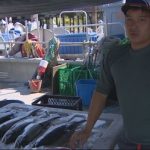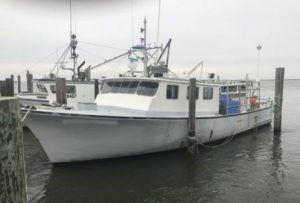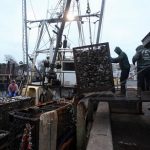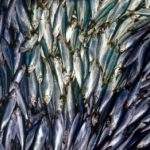Tag Archives: MPA’s
Area of Interest – Canada Identifies Large Ocean Area off the Coast of British Columbia for Protection
 The Government of Canada is moving forward on its plan to reach its domestic and international targets of protecting 5% of Canada’s marine and coastal areas by 2017 and 10% by 2020 to ensure a healthy environment and economy for current and future generations. Today, Parliamentary Secretary to the Minister of Fisheries, Oceans and the Canadian Coast Guard and Member of Parliament for Burnaby North – Seymour, Terry Beech, on the behalf of the Honourable Dominic LeBlanc, Minister of Fisheries, Oceans and the Canadian Coast Guard, announced a new Area of Interest (AOI) off the coast of British Columbia, with the intention of making it one of Canada’s largest Marine Protected Areas (MPAs) by 2020. click here to read the press release 17:09
The Government of Canada is moving forward on its plan to reach its domestic and international targets of protecting 5% of Canada’s marine and coastal areas by 2017 and 10% by 2020 to ensure a healthy environment and economy for current and future generations. Today, Parliamentary Secretary to the Minister of Fisheries, Oceans and the Canadian Coast Guard and Member of Parliament for Burnaby North – Seymour, Terry Beech, on the behalf of the Honourable Dominic LeBlanc, Minister of Fisheries, Oceans and the Canadian Coast Guard, announced a new Area of Interest (AOI) off the coast of British Columbia, with the intention of making it one of Canada’s largest Marine Protected Areas (MPAs) by 2020. click here to read the press release 17:09
State to San Diego fishermen: Drop dead
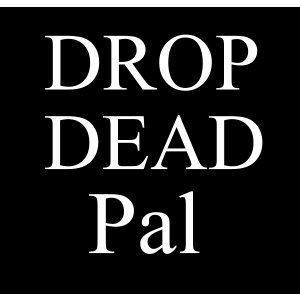 Over 100 people gathered in Pacific Beach on March 20, for the release of data from a five-year, $4 million study of the state’s South Coast Marine Protection Areas. The study began in 2011 and studied 12 areas of our shoreline’s ecosystem. Creation of these areas closed off recreational fishing in much of the oceanfront in the San Diego area. Erin Meyer, senior scientist from the Ocean Science Trust, the nonprofit agency assigned to coordinate the data, advised to group, “The purpose of the meeting was not to defeat the MPAs or debate its merits.” However, several angler groups and charter boat operators had questions. “What exactly are you monitoring?” asked Doug, a crewmember aboard the Black Jack charter boat out of Dana Landing in Mission Bay. The study, from data gathered by Sea Grant California, focused on different phases in 12 areas, including ecosystem, tides, kelp forest, spiny lobster, and sea birds. There was good news. Shad Catarius, a commercial lobster fisherman, was on the study group for the spiny lobster issue. read the story click here 20:08
Over 100 people gathered in Pacific Beach on March 20, for the release of data from a five-year, $4 million study of the state’s South Coast Marine Protection Areas. The study began in 2011 and studied 12 areas of our shoreline’s ecosystem. Creation of these areas closed off recreational fishing in much of the oceanfront in the San Diego area. Erin Meyer, senior scientist from the Ocean Science Trust, the nonprofit agency assigned to coordinate the data, advised to group, “The purpose of the meeting was not to defeat the MPAs or debate its merits.” However, several angler groups and charter boat operators had questions. “What exactly are you monitoring?” asked Doug, a crewmember aboard the Black Jack charter boat out of Dana Landing in Mission Bay. The study, from data gathered by Sea Grant California, focused on different phases in 12 areas, including ecosystem, tides, kelp forest, spiny lobster, and sea birds. There was good news. Shad Catarius, a commercial lobster fisherman, was on the study group for the spiny lobster issue. read the story click here 20:08
Obama’s new ocean preserves are bad for the environment and for people
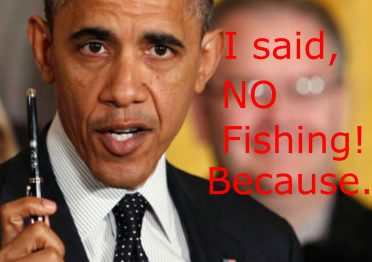 Who wants to save the oceans? Short answer: everyone, especially politicians. A less frequently asked question is whether their high-profile efforts always work. Right now, world leaders seem to want to see who can declare the biggest marine protected areas, or MPAs, in their territory. MPAs are kinds of national parks for sea life that extends from ocean surface to ocean floor. Commercial fishing and other undersea ventures are banned in them. They are popping up everywhere. In August, President Obama announced one in the western Pacific Ocean that is 50 per cent bigger than Texas. In September he created another, more modest one off the coast of New England. Britain announced yet another MPA in September around St. Helena Island in the south Pacific. It is half the size of the Lone Star State. In fact, the MPA movement has become a religion with accepted articles of faith that more and bigger are better. This current obsession is bad for the oceans, bad for the global environment, and bad for people. Consider what the imposition of an MPA can do to the economy and livelihood of local fishers, who are unable to easily pick up and move elsewhere. Some fishermen in New England are warning that they could go out of business as a result of the new Atlantic marine preserve. Read the op-ed here 10:48
Who wants to save the oceans? Short answer: everyone, especially politicians. A less frequently asked question is whether their high-profile efforts always work. Right now, world leaders seem to want to see who can declare the biggest marine protected areas, or MPAs, in their territory. MPAs are kinds of national parks for sea life that extends from ocean surface to ocean floor. Commercial fishing and other undersea ventures are banned in them. They are popping up everywhere. In August, President Obama announced one in the western Pacific Ocean that is 50 per cent bigger than Texas. In September he created another, more modest one off the coast of New England. Britain announced yet another MPA in September around St. Helena Island in the south Pacific. It is half the size of the Lone Star State. In fact, the MPA movement has become a religion with accepted articles of faith that more and bigger are better. This current obsession is bad for the oceans, bad for the global environment, and bad for people. Consider what the imposition of an MPA can do to the economy and livelihood of local fishers, who are unable to easily pick up and move elsewhere. Some fishermen in New England are warning that they could go out of business as a result of the new Atlantic marine preserve. Read the op-ed here 10:48
MPAs: Closing parts of the ocean to fishing not enough to protect marine ecosystems
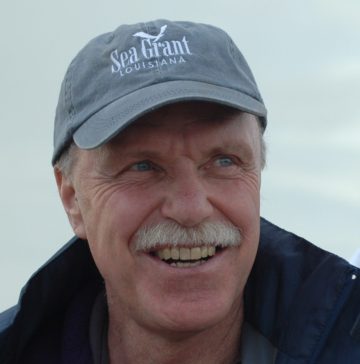 A University of Washington fisheries professor argues this week that saving biodiversity in the world’s oceans requires more than banning fishing with marine protected areas, or oceanic wilderness areas. In a three-page editorial published this week in the journal Nature, he argues that this increasingly popular conservation strategy is not as effective as properly managing recreational and commercial fisheries. “There’s this idea that the only way you can protect the ocean is by permanently closing parts of the ocean to fishing, with no-take areas,” said Ray Hilborn, a professor in the UW’s School of Aquatic and Fishery Sciences. “You protect biodiversity better by regulating fisheries over the country’s entire economic zone. Several environmental organizations have set a longer-term goal of making 30 percent of the world’s oceans into no-take marine protected areas by the year 2030. But Hilborn believes this is not the best way to protect global marine ecosystems. Read the rest here 20:48
A University of Washington fisheries professor argues this week that saving biodiversity in the world’s oceans requires more than banning fishing with marine protected areas, or oceanic wilderness areas. In a three-page editorial published this week in the journal Nature, he argues that this increasingly popular conservation strategy is not as effective as properly managing recreational and commercial fisheries. “There’s this idea that the only way you can protect the ocean is by permanently closing parts of the ocean to fishing, with no-take areas,” said Ray Hilborn, a professor in the UW’s School of Aquatic and Fishery Sciences. “You protect biodiversity better by regulating fisheries over the country’s entire economic zone. Several environmental organizations have set a longer-term goal of making 30 percent of the world’s oceans into no-take marine protected areas by the year 2030. But Hilborn believes this is not the best way to protect global marine ecosystems. Read the rest here 20:48
Protection of marine areas to be based on science, Hunter Tootoo says
 Federal Fisheries Minister Hunter Tootoo says science will determine not only which areas of Canada’s oceans the government will designate for protection, but also what development, if any, will be permitted in those areas. “In the meetings I’ve had with the environmental groups, the only way we’re going to be able to accomplish this is all of us working together. Basically all hands on deck,” Tootoo added. Read the article here 09:54
Federal Fisheries Minister Hunter Tootoo says science will determine not only which areas of Canada’s oceans the government will designate for protection, but also what development, if any, will be permitted in those areas. “In the meetings I’ve had with the environmental groups, the only way we’re going to be able to accomplish this is all of us working together. Basically all hands on deck,” Tootoo added. Read the article here 09:54
Fishermen say communities back their fight against new regulation
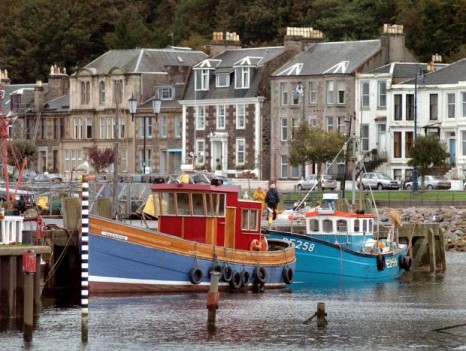 Fishermen have received backing from communities on the Clyde after warning their livelihoods are at risk from proposed regulation, an industry body has said. The Clyde Fishermen’s Association (CFA) has hosted meetings to make the public aware of the effect of changes to the management of marine protection areas () and a planned regulating order. The association claims the new rules will economically damage villages and towns dependent on fishing. Read the article here 17:20
Fishermen have received backing from communities on the Clyde after warning their livelihoods are at risk from proposed regulation, an industry body has said. The Clyde Fishermen’s Association (CFA) has hosted meetings to make the public aware of the effect of changes to the management of marine protection areas () and a planned regulating order. The association claims the new rules will economically damage villages and towns dependent on fishing. Read the article here 17:20
At Asia-Pacific summit, Kerry gives wrong advice for world’s fisheries
 But Secretary Kerry gets some key facts wrong here. For one, most of the fisheries of the world are not overfished. In 2014, the UN Food and Agriculture Organization (FAO) placed that number at 29 percent, and reported that approximately 70 percent of the stocks that they assessed were being fished within biologically sustainable levels. If the U.S. is going to promote sustainability worldwide, it should acknowledge current management successes. Read the rest here 12:35
But Secretary Kerry gets some key facts wrong here. For one, most of the fisheries of the world are not overfished. In 2014, the UN Food and Agriculture Organization (FAO) placed that number at 29 percent, and reported that approximately 70 percent of the stocks that they assessed were being fished within biologically sustainable levels. If the U.S. is going to promote sustainability worldwide, it should acknowledge current management successes. Read the rest here 12:35
Council For Sustainable Fishing – Help get the best qualified fisheries managers
 Good news from last week: Governors Nikki Haley and Rick Scott nominated charter boat operators Mark Brown from Charleston and Robert Johnson from St. Augustine respectively for appointment to the South Atlantic Fishery Management Council to fill seats for recreational/for-hire representation. Read more here 17:19
Good news from last week: Governors Nikki Haley and Rick Scott nominated charter boat operators Mark Brown from Charleston and Robert Johnson from St. Augustine respectively for appointment to the South Atlantic Fishery Management Council to fill seats for recreational/for-hire representation. Read more here 17:19
Fishermen, Michael Cohen, owner and director of Santa Barbara Adventure Company, travelled to Capitol Hill to EXCLUDE you!
Cohen operates an outfitting business that runs sea cave kayaking tours within the Channel Islands National Marine Sanctuary, Scorpion Anchorage State Marine Reserve and Painted Cave State Marine Conserv ation Area. ( maybe if fishermen are excluded, ALL uses should be excluded) continued@santabarbaraindependent
ation Area. ( maybe if fishermen are excluded, ALL uses should be excluded) continued@santabarbaraindependent
No-fishing zones proposed in New Jersey
Northjersey.com – New Jersey, like many other coastal states, has never considered adopting what several marine conservation groups call the most effective tool to aid coastal ocean habitat – “no-take” protected areas that prohibit fishing and other activity, such as exploratory drilling, in the designated zones. “There are already a lot of areas where we are limited through regulations on gear or what season we can fish in,” said Nils Stolpe, communications director for the Garden State Seafood Association. continued
One year later: few violations reported in new marine protected areas, poaching a concern
COAST CITIES — Poaching. Lobster traps where they shouldn’t be. Spearfishing protected species. These are the kinds of violations Cyndy Pourroy, a warden with the California Department of Fish and Wildlife, was on the lookout for as she gazed out over Swami’s marine protected area from a staircase near Tide Park beach. Read more here






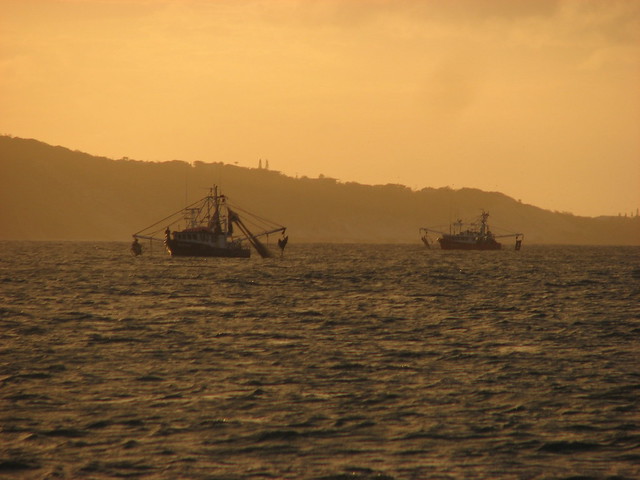 All told, vessels have been catching 39% less seafood—roughly 4500 metric tons—in the Great Barrier Reef than before the closure, Fletcher and colleagues report in a paper published online ahead of print in Ecological Applications. (There was no change in the areas to the north and south.) Annual revenue fell by AU$58 million, rather than the predicted AU$13 million loss. Although some studies have shown that fish populations increased inside the reserves, the fishing outside hasn’t seen a benefit—even 9 years later.
All told, vessels have been catching 39% less seafood—roughly 4500 metric tons—in the Great Barrier Reef than before the closure, Fletcher and colleagues report in a paper published online ahead of print in Ecological Applications. (There was no change in the areas to the north and south.) Annual revenue fell by AU$58 million, rather than the predicted AU$13 million loss. Although some studies have shown that fish populations increased inside the reserves, the fishing outside hasn’t seen a benefit—even 9 years later. 


























